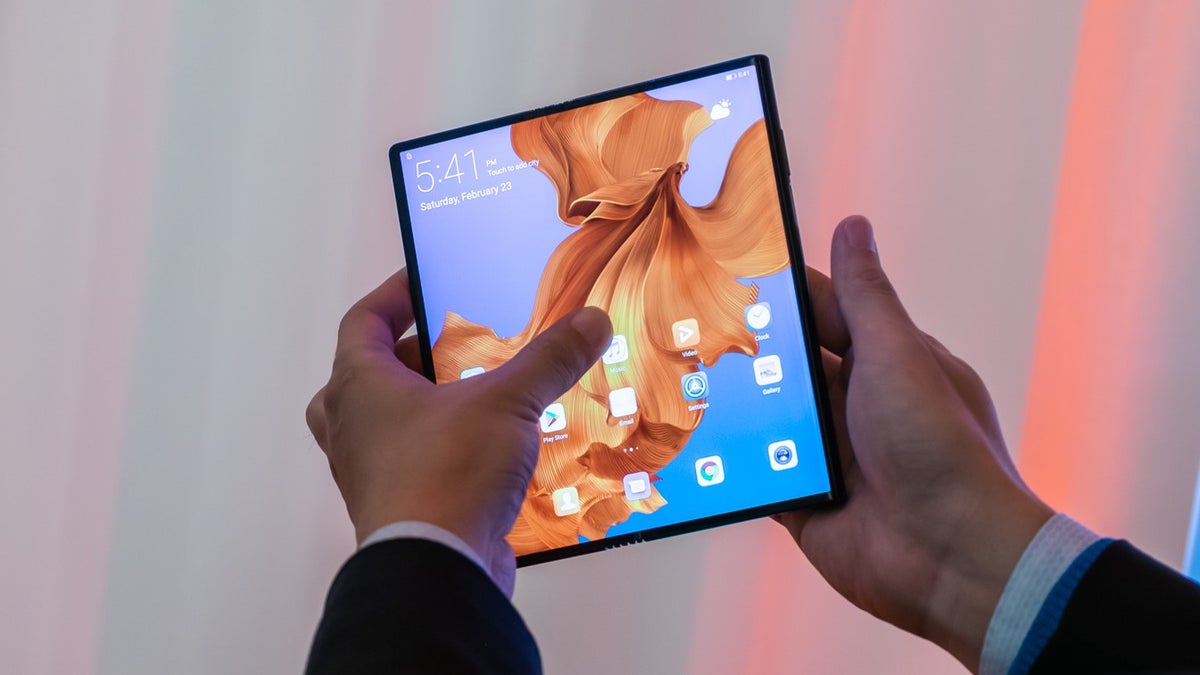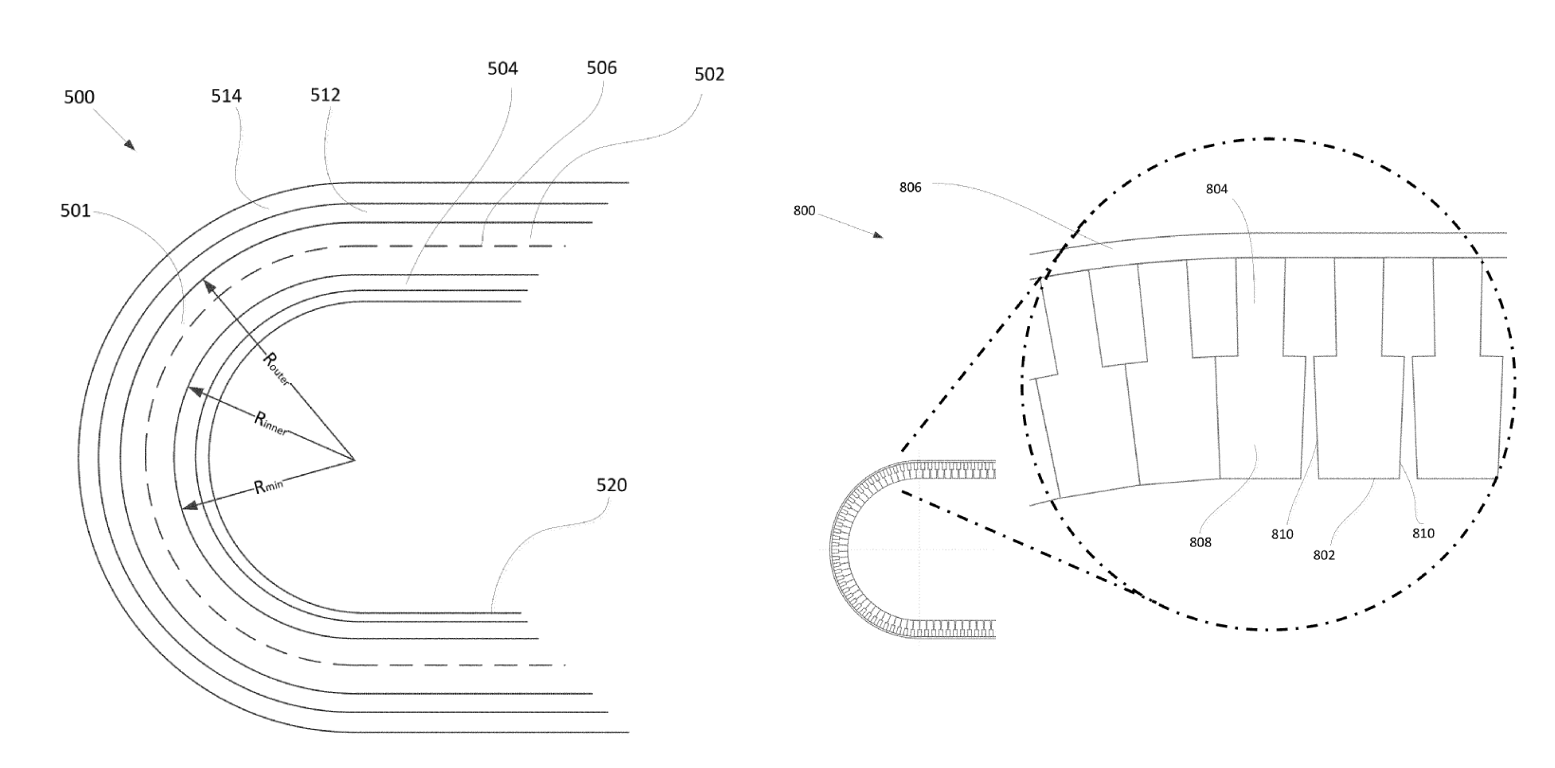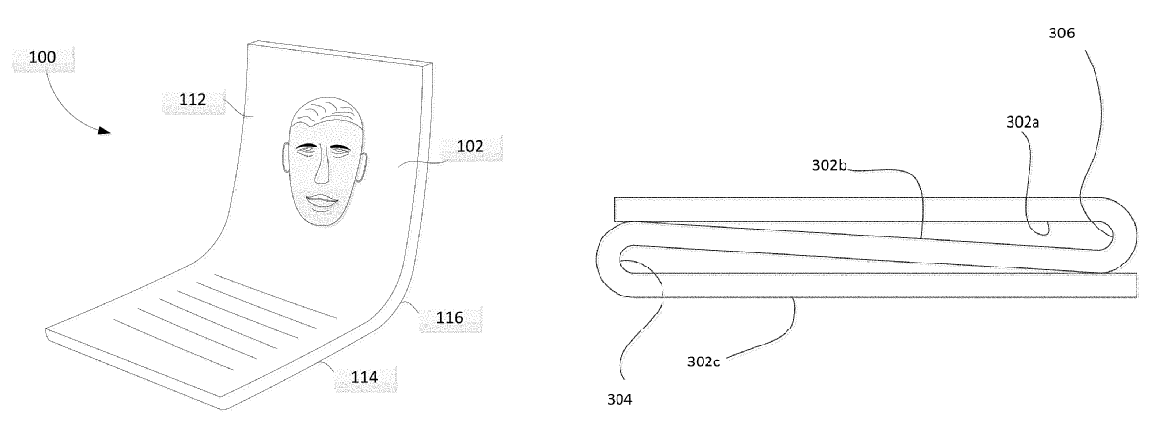Google foldable phone might be on the way, patent suggests

The Mate X seems to have the preferred design right now, but Google might be going its own way
It seems that Google is planning to make use of its own developments as well, as a WIPO patent found by Patently Mobile shows. The patent is titled “Foldable display neutral axis management with thin, high modulus layers” and, as it’s obvious, focuses on the components used to create that infamous bend without compromising the quality of the display.

Besides the display layers (left) there's also a 'stiffening' layer (right) that adds rigidity to the fold
Something interesting found in the patent is that Google is considering a material that consists of glass fibers and polymers for the top (transparent) layer of the display. One of the biggest concerns with the announced foldable phones is that their plastic displays are susceptible to scratches more easily. Perhaps Google’s solution would be more durable.
Google favors clamshell design rather than the book-style one
If the crude schematics are to be believed, Google is leaning towards creating a device that’s similar in size to today’s phones when unfolded and is more compact otherwise, rather than unfolding to become a tablet. One drawing even suggests that there might be two folds or a “Z-fold” as its called in the patent. And while the text clarifies that this type will be even harder to manufacture since the layers will have to be able to stretch and compress at the same time, Google appears to have a solution to that conundrum as well.

They always use the most handsome models for patent drawings
As we can see from the drawing above, Google, just like the other manufacturers currently developing foldable phones, has trouble "squishing" the fold. However, the patent states that "The OLED display layer can be configured to be bent repeatedly to a radius of less than 10 mm." The minimum threshold is said to be "greater than 1 mm" which could mean anything between 2 and 9 mm overall. Realistically speaking for the next year or two we probably won't see bends that are smaller than 5 mm. Beyond that, the strength and elasticity needed by the display materials might be too great. However, with the advancements in technology, we're sure manufacturers will get there eventually.
When or if we’ll ever see a foldable phone from Google is still uncertain, but the developments in that field make us excited about what’s to come. The more competition there is in that segment, the sooner we'll see these new devices become affordable.
Follow us on Google News













Things that are NOT allowed:
To help keep our community safe and free from spam, we apply temporary limits to newly created accounts: